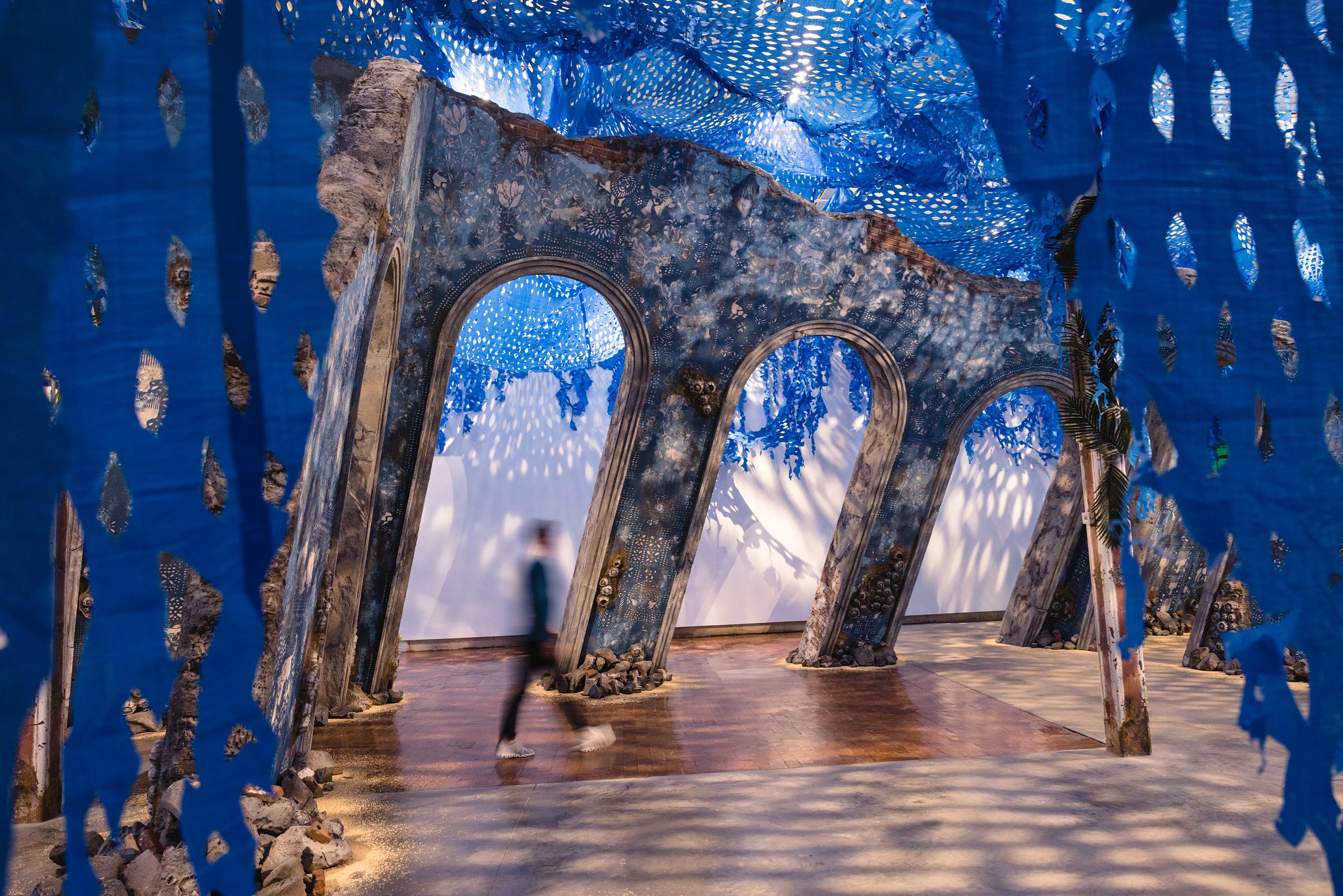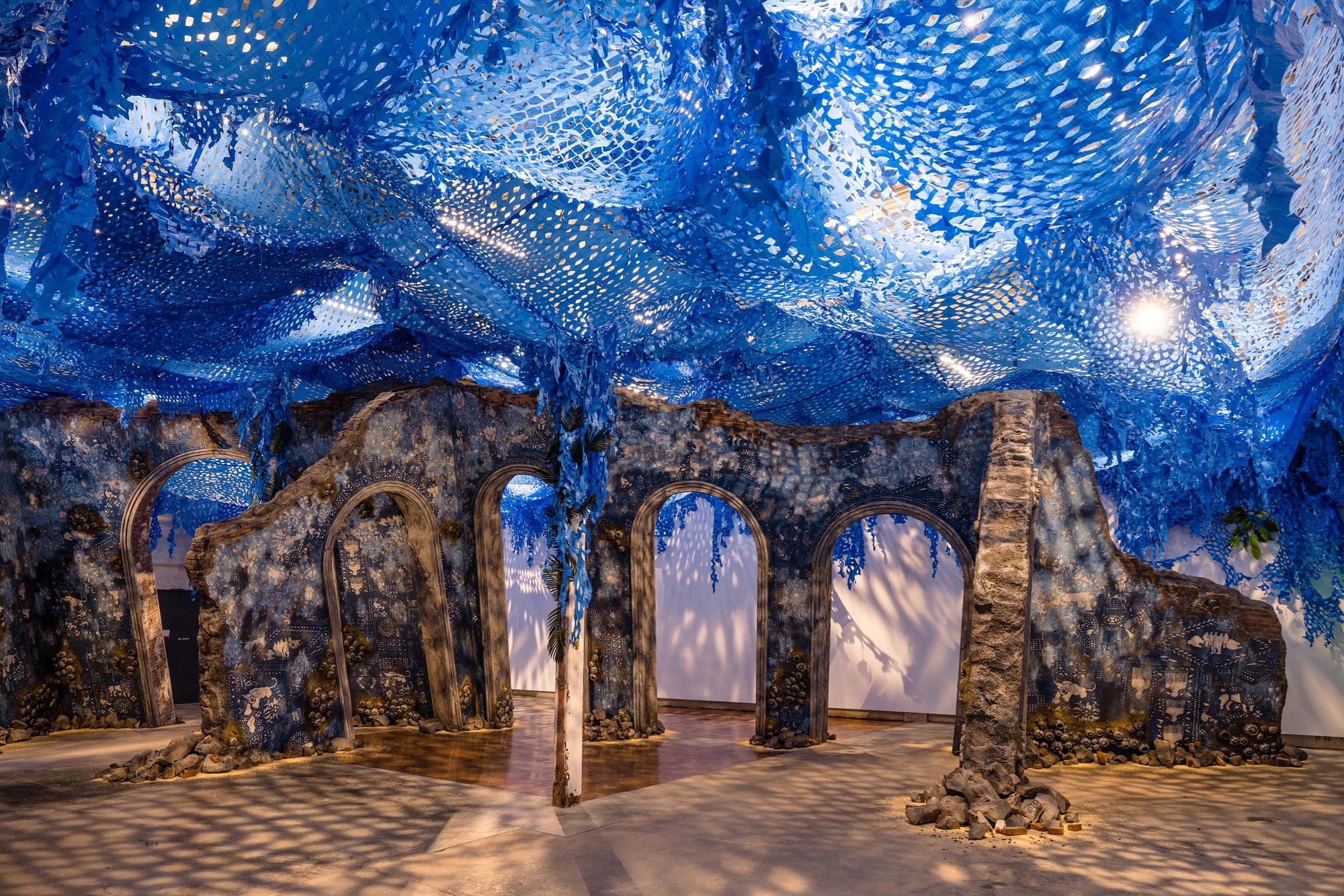Walking into artist Firelei Báez’s To breathe full and free: a re-visioning, a correction (19°36’16.9“N72°13’07.0“W, 42° 21’48.762″ N 71°1’59.628″ W, 36° 22′ 0.1848’‘ N94° 12′ 8.64’’ W) is like walking into an undersea ruin.The blue tarps overhead refract light onto the ground as if a giant papel picado has been hung across the sky.
Báez’s sculptural piece is transportive yet set in a liminal space. The titular longitudinal and latitudinal coordinates signify two different locations. The first is the Sans-Souci palace in Haiti, which the sculpture is based on. The second is the ICA Watershed in Boston, where the work was first presented. In its installation at Momentary, a soundscape in the background, created from a combination of recordings from both the Caribbean and Boston Harbor, washes over you when you walk into the room. In reimagining the Haitian palace, the piece leans forward toward you, daring you to walk through.

As you explore the piece, it’s through carefully curated details that Báez invites people to learn more, both about the interconnected history of the two places –– the Hatian Revolution forced the United States to directly confront slavery and other problems that it had previously avoided, and led to tangible changes to U.S. geography through the Lousiana Purchase –– and about the art itself. At the same time, the piece creates a feeling of timelessness. The Momentary provides an opportunity to sit with the art, often with no one else in the room. It’s a place I can imagine reading a book, having an intimate conversation, doing yoga, or journaling.
Digital immersive experiences featuring the rendered work of artists like Vincent van Gogh, Frida Kahlo, and Oscar-Claude Monet have become popular in recent years, advertising the kinds of things I’ve just described. Having been to a couple of them, I understand the vision: art can bring people together. There’s something about being surrounded by an artwork that feels healing. But immersive exhibitions, which have been dubbed by some as a “cynical cash grab” or the “lazy lovechild of TikTok and enterprising warehouse landlords,” can also leave the viewer wanting more substance.
Báez’s piece is what other immersive exhibitions wish they could be: a way to interact deeply and intimately with art that sparks your curiosity. And without the bright lights or protective glass of a typical art museum, it feels like hallowed ground.
The effect works perhaps because To breathe full and free isn’t a digital projection. It’s also not expanded beyond the frame the artist intended with AI or other people’s imagination. When you’re at the Báez exhibit, small pebbles are sprinkled around the floor, air from the AC rustles the blue tarps, and the sculpture looks planted in the ground, as if it’s always been there. You might feel as if you can almost reach out and touch it (but don’t do that, it’s very not allowed).
The actual ruins of the Sans-Souci palace are on a hill in the Caribbean, and Boston Harbor is over 1,000 miles away. But Báez has brought both the palace and ocean down to Arkansas, a state that wouldn’t even exist had it not been for the history the exhibition alludes to. To breathe full and free is an unpretentious invitation to ponder how interconnected the world is, but it’s also just a beautiful space to take a deep breath and be.
This exhibit is up until Sept. 24 at the Momentary; no tickets are required. It’s free!






